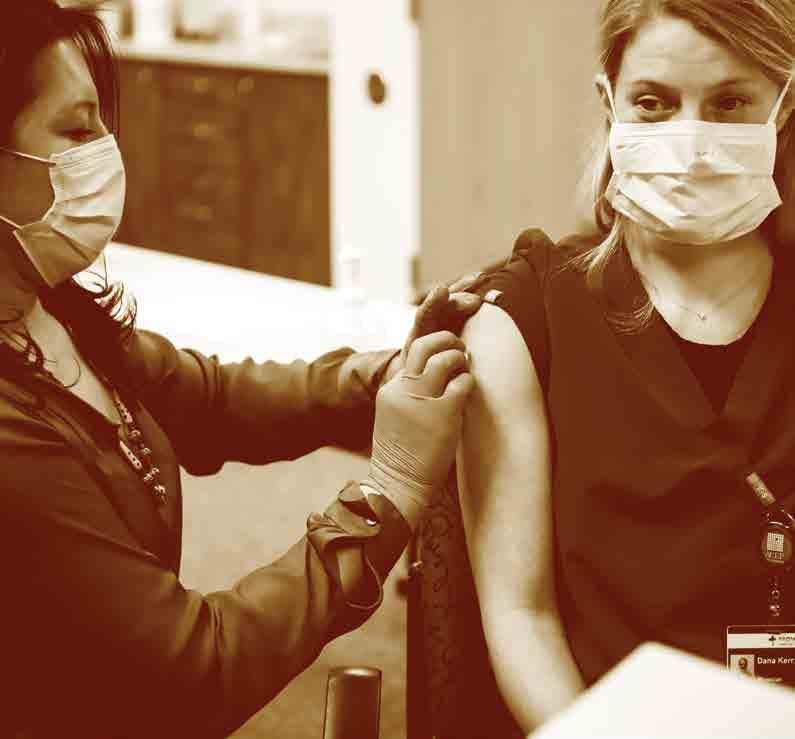
15 minute read
HEALTHCARE
Ahead of the Curve
Alaska leads the nation in COVID-19 testing and vaccination rates
By Vanessa Orr
For more than a year, COVID-19 has been testing the abilities of health systems all over the world to deal not only with the virus itself but with the host of challenges that accompany it. From ever-evolving CDC recommendations to the lack of personal protective equipment to vaccines that must be stored in sub-zero freezers, health professionals have had to be extremely agile in adjusting to the vagaries of the pandemic.
Alaskans can take comfort in the fact that the state and its partners in the healthcare field have managed to shift as needed—setting up testing sites and finding ways to fill the gaps in supplies and equipment; establishing contact tracing protocols to identify those who might have been infected; setting up vaccination systems to get shots in arms as quickly as possible; and providing accurate, up-to-date information to ensure that all Alaskans can protect themselves from this highly contagious and sometimes deadly disease.
Testing for COVID-19

According to State of Alaska Department of Health & Social Services (DHSS) Chief Medical Officer Anne Zink, when it comes to testing for COVID-19, Alaska is ahead of the curve.
“We are currently at the best place that we have been during the pandemic because we have a lot more access to resources, allowing for point-of-care testing,” she explains. “Many businesses are also doing their own surveillance testing of employees once or twice a week, so they have been able to identify asymptomatic or mildly symptomatic cases before the virus spreads.”
She offers the example of the Juneau School District, which is providing surveillance testing for all of its teachers. Companies such as the Alyeska Hotel and the Alaska Railroad are also partnering with the state to collaborate on how to best provide this type of testing.
“We are encouraging any businesses that work with the public on a regular basis to look at surveillance testing as a tool to keep their employees safe and to keep the state moving forward,” says Zink, adding that they are reaching out to grocery stores and similar businesses to offer their assistance. “Some may be hesitant because of the amount of time they think it will take, but we can work through the process with them to find a way that it doesn’t require too many additional resources while keeping employees safe.”
Many employers are ordering the tests themselves or partnering with the state to offer testing in the workplace, which is increasing the number of sites where people can get tested. Most hospitals and clinics also offer testing, and Zink adds that there are now testing kits available online.
Since testing began in early 2020, automation and an increase of in-house testing have become key factors in improving how quickly the virus can be detected.
“Even though Providence had its own testing machine at the beginning of the pandemic, we had limited reagents, so we could only do a certain number of tests a day,” explains Michael Bernstein, chief medical officer for Providence Health & Services Alaska. “We had to
We’re Back!
Connecting Alaskan Communities with fast, reliable passenger, charter and cargo service.
• Up to 37 Seats • Flight Attendant on Every Flight • Up to 5,000 lbs of Cargo • Restroom on Every Aircraft

We Call Alaska Home.
Call 800.866.8394 or visit www.RavnAlaska.com
“The neat thing about the Johnson & Johnson vaccine is that it only requires one dose, and it doesn’t need to be stored at supercold temperatures, which will make it much easier to use in rural areas where they don’t have the proper storage. I think that by the second quarter of 2021, we will be able to provide the vaccine to anyone in Alaska who wants it.”
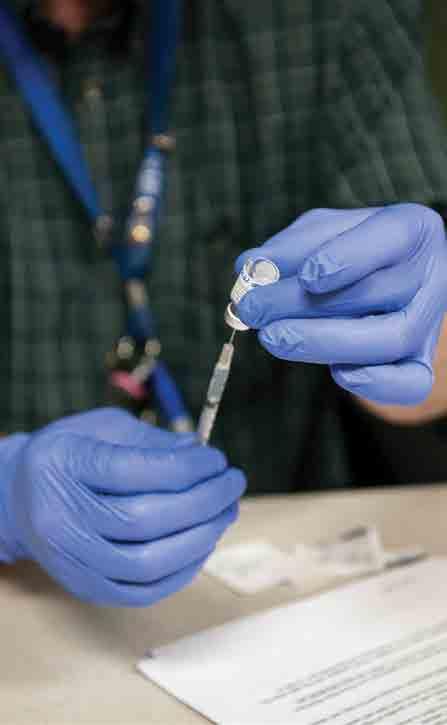
Michael Bernstein Chief Medical Officer Providence Health & Services Alaska
follow specific criteria about who we could test and not test in-house, and the majority of tests had to be sent to the state lab, which, because of the large amount of tests they were processing, had a long turnaround time.
“As the process became more automated, we’ve been able to utilize machines that can perform higher numbers of tests per day with faster throughput, and now we can do all of our own testing in-house, which results in much more reasonable turnaround times,” he adds.
Zink credits collaboration, as well as innovation, for the state’s high testing numbers.
“Early on when the state couldn’t get swabs, we partnered with a local manufacturer to produce our own,” she says. “The state lab also greatly expanded testing capabilities to be able to respond to the demand.
“We also saw a rapid response from hospitals and tribal health systems,” she adds. “Realizing how long it would take to get the tests to and from labs in the Lower 48, they purchased the supplies and the resources they needed to do it here.”
As of mid-February, more than 1.5 million tests had been performed since the start of the pandemic, with an overall daily positivity rate of 2.51 percent. Alaska ranked second in the country overall for per capita testing.
Still, with the influx of new strains of the virus, no one is letting down their guard. The state is currently requesting that people get a COVID-19 test one to three days prior to travel, and to quarantine for five to seven days once
COVID-19 vaccine is prepared for distribution at Providence Kodiak Island Medical Center’s pharmacy.
Angel Somerling | Providence Health & Services Alaska
in the state, followed by an additional test to make sure they are negative for the virus.
“The goal of this is to catch variants quickly,” says Dr. Zink.
“While we’ve been fortunate that we’ve not had much in the way of the new genetic variants of the virus, it can change things, particularly before we’re fully vaccinated,” she continues. “We believe that the vaccines will be protective, but variants can spread more easily between people, so we potentially could have another surge on that basis. That’s why we want to get everyone vaccinated as quickly as possible.”
Getting Shots in Arms
While testing for the virus is going well, the vaccination process is working even better. In March, Alaska became the first state in the nation to make COVID-19 vaccinations available to anyone over the age of sixteen who lives or works in the state. “We are getting out quite a bit of vaccine; so far, our biggest limitation has been the amount of vaccine that we have available in-state,” says Zink.
The state reports it has administered more than 309,997 with 126,145 people fully vaccinated and 183,859 having received the first shot as of midMarch. That means about 33 percent of Alaska’s population has received at least one dose of one of the three available vaccines and 22 percent have been fully vaccinated, according to the state’s vaccine dashboard.
The first round of vaccines went to healthcare workers and those in longterm care facilities, with the second round going to those 65 and older and progressing along through age groups and tiers until it became widely available in March.
“Those age 65 and over account for more than 70 percent of our deaths and 50 percent of our hospital visits, even though they make up only 10 percent of our population,” says Zink. “We want to vaccinate them as quickly as possible to keep hospital capacity down while protecting the most vulnerable.
“It’s a bit challenging for messaging when you talk about essential employees, because we are all essential to this economy and to each other’s lives,” says Zink. “Every person who gets vaccinated helps the rest of us by reducing hospital capacity and virus transmission.”
While the vaccine is available to anyone older than sixteen, which is the lowest age authorized by the Food and Drug Administration for use of the Pfizer vaccine, the Moderna and Johnson & Johnson vaccines are available to anyone over eighteen.
“The vaccine is safe and has passed all safety protocols, but there is a lot of misinformation out there,” says Zink. “It’s heartbreaking when someone gets sick and it was preventable.
“I recently spoke to a woman who was worried about getting the vaccine, and she asked, ‘What would you tell your mom?’” Zink continues. “I told her I would tell my mom to get vaccinated, 100 percent.”
Zink believes that the process may move more quickly in the next few months as people in the next tiers tend to be a more computer-savvy group, making it easier to sign up for vaccines. “A lot of the kinks in the

Anne Zink, Chief Medical Officer, Alaska Department of Health and Social Services
system have also been worked out,” she adds.
“We say, ‘Shots in arms fast and fair,’ and [have been] striving to get the vaccine out as fast as possible and to do it fairly, giving it first to those who are most at risk,” she adds.
Providence Health & Services Alaska is doing its part to inoculate healthcare workers, as well as spread the message to the general public about the safety of the vaccine and where it is available.
“Our allocation from the state was specifically to be used to vaccinate our healthcare workers and doctors who worked in our facilities, as well as contractors and others on site,” says Bernstein, adding that Providence held its first vaccine clinic on December 16.
“Now [as of mid-February] over 65 percent of our healthcare workers and doctors have been vaccinated, which is a higher number than we thought we’d be able to get to this quickly,” he adds. “We were limited initially by the amount of vaccine available, but that has improved.”
While communities are hosting mass vaccination events where they can provide up to 1,000 vaccines a day, vaccines can also be found at private clinics, doctors’ offices, and pharmacies, among other locations.
“There were so many opportunities available for community mass vaccinations that it didn’t make sense for us to provide another one,” says Bernstein. “What we’ve done instead is to provide education and advice— particularly targeting underserved populations—to address vaccine hesitancy and to encourage people to get the vaccination.”
Providence is reaching people through social media campaigns, as well as working with community health workers who live in underserved neighborhoods to spread the message.
Southcentral Foundation has also been integral to the vaccine rollout, first offering the vaccines to elders and Alaska Native customer-owners. And very shortly after that to teachers,
Sponsored by

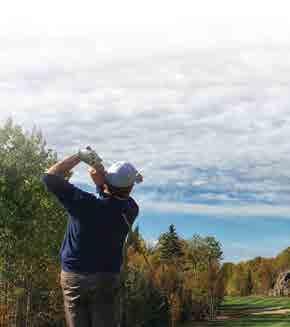

3-CLUB SCRAMBLE
33rd Annual G LF CLASSIC
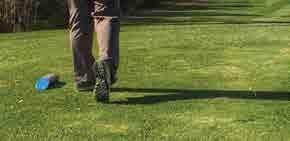


TUESDAY, JUNE 22, 2021 MOOSE RUN GOLF COURSE
Join in the fun with business and community leaders to support a great cause that helps kids learn about business and economics. All proceeds benefi t Junior Achievement of Alaska.
Sign up at alaskaja.org
of Alaska, Inc.
For more information or to ask about sponsorship opportunities please call (907) 344-0101 or fteo@ja-alaska.org
$800 per team (4) or $200 per golfer. Includes, fees, cart, breakfast, Awards Banquet, opportunity to win many prizes.
Registered Nurse Nicole Vosgien, with Providence Kodiak Island Medical Center’s Caregiver Health Services, administers the COVID-19 vaccine to Dr. Dana Kerr, an Emergency Department physician at the hospital. Kerr was the first caregiver at Providence Kodiak Island Medical Center to receive the vaccine.

Angel Somerling | Providence Health & Services Alaska
We take great care of moms-to-be and the entire family
• Our Doctors in Pediatrics are specialists, and parents. • Same day appointments available - in person or telemed. • Complimentary no charge pre-natal meeting so expectant parents can meet our doctors and staff to be sure we’re a good t for the entire family. • On-site lab and radiology diagnostics, same day results
Desiree Pediatrics Dr. Laufer Pediatrics Come in and meet our Pediatric and Family Medicine Providers!

Providence Kodiak Island Medical Center security department caregivers deliver a box of COVID-19 vaccine to the facility on Tuesday, December 15, after it was picked up from Kodiak Benny Benson State Airport.

Angel Somerling | Providence Health & Services Alaska

police officers, and people who are incarcerated or experiencing homelessness. Finally, by mid-March the Alaska Native foundation was offering the vaccine to everyone (of age).
“It is exciting to be part of Alaska’s vaccine success by offering more vaccine to the community while ensuring that all customer-owners and their household members remain eligible for the vaccine.” said April Kyle, president and chief executive, in an early March release. “The health and well-being of our community is a shared responsibility, and we are pleased to make additional vaccine available to even more Alaskans.”
Southcentral Foundation receives its vaccine allotment from the Indian Health Service, an operating division within the US Department of Health and Human Services, that dispenses vaccines separately from the state of Alaska’s allocation.
Overcoming Logistical Challenges
Logistics are always a concern in Alaska and distributing the vaccine to remote areas is a challenge in and of itself. From the time that the vaccine leaves the manufacturing site in Colorado, for example, Alaska has five days to get it administered.
While some vaccine can be shipped directly to its final destination, other shipments go through Anchorage and are redistributed to outlying areas. “We’ve had to deal with some logistical barriers, and of course, weather, but we’ve managed to overcome these limitations through our redistribution process,” says Zink, adding that states that lack Alaska’s existing infrastructure have had more difficulty supplying the vaccine.
While most states get a weekly allocation of vaccines, Alaska receives a monthly allocation, which has also helped the state to overcome geographic barriers in reaching more remote communities.
The state is fortunate that, in addition to vaccines provided by the federal government to the general population on a per capita basis, it also receives vaccines specifically targeted at those who work at Department of Defense facilities or who are served by the Veterans Administration and Indian Health Services.
“One of the reasons that Alaska is ranked so high in the number of vaccinations given is because we have these three significant sources of the vaccine,” says Bernstein.
To reach the highest number of people possible, especially in remote areas, the state has been working on its vaccine allocation plan in partnership with the Alaska Native Tribal Health Consortium since the very beginning. “The tribes all opted to come in with the state to distribute the vaccine,” says Zink. “They decide how to prioritize it, based on how they want to allocate it within a census area. We’re like Amazon delivery: we get it there, and then they decide where it goes.”
Providence also worked with its more rural facilities in Seward, Valdez, and Kodiak to reach critical access communities. “Our hospital in Kodiak Island had enough vaccine left that after vaccinating healthcare workers, they were able to open it up to community members,” says Bernstein.
Time to sell your company?



30+ Years Experience • Value Assessment • Consultation • Marketing • Results


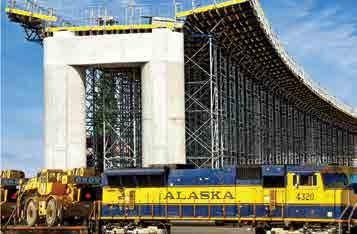
SHIP BEYOND THE RAILS.
FROM RAIL TO SEA TO ROAD, WE DO IT ALL.
The Alaska Railroad does more than you might expect. We ship freight to and from anywhere in North America. Even places without rail access. And we handle all the logistics along the way. So whatever it takes to get it there – barge, train, truck - you only need to deal with one point of contact and one invoice. Call for a free quote today: 800.321.6518 | AlaskaRailroad.com/freight
“We are encouraging any businesses that work with the public on a regular basis to look at surveillance testing as a tool to keep their employees safe and to keep the state moving forward. Some may be hesitant because of the amount of time they think it will take, but we can work through the process with them to find a way that it doesn’t require too many additional resources while keeping employees safe.”

Anne Zink Chief Medical Officer Alaska Department of Health and Social Services
According to Zink, as of midFebruary, almost 100,000 people had been vaccinated, which is just under one-seventh of Alaska’s population.
As more vaccines become available, it is expected that the state will be able to ramp up even further. On February 27, the Johnson & Johnson “one and done” vaccine received emergency use authorization from the FDA, and the federal government also agreed to purchase 200 million additional vaccine doses, which should make even more available.
“The neat thing about the Johnson & Johnson vaccine is that it only requires one dose, and it doesn’t need to be stored at super-cold temperatures, which will make it much easier to use in rural areas where they don’t have the proper storage. I think that by the summer of 2021, we will be able to provide the vaccine to anyone in Alaska who wants it,” Bernstein said in February.
And she was right. The vaccine is now available to anyone in Alaska who wants it.
Alaska was first in the nation to make the COVID-19 vaccines available to everyone sixteen and older who lives or works in the state.
Angel Somerling | Providence Health & Services Alaska









